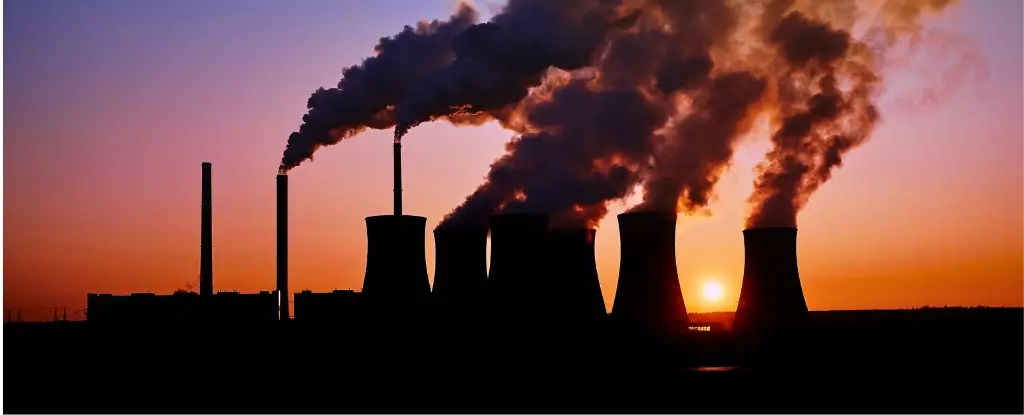Recent analyses reveal alarming data indicating that the Earth has crossed the critical threshold of 1.5°C of global warming, a limit established under the 2015 Paris Agreement. This agreement was designed to regulate greenhouse gas emissions to prevent dangerous climate change, aiming to keep temperature rises to no more than 1.5°C above pre-industrial levels. However, the year 2024 marked a significant point where average global temperatures reportedly reached approximately 1.6°C above late 19th-century averages, suggesting that climate systems may have entered a precarious new era. While it is essential to note that the Paris Agreement metrics account for long-term averages rather than year-to-year variations, the findings from two independent studies indicate a concerning trend that cannot be ignored.
The Implications of the 2024 Temperature Surge
Although the specific temperature spike of 2024 can be partly attributed to natural phenomena—such as the El Niño weather pattern—the implications suggest a broader, longer-term escalation trend. Research from Europe and Canada examined whether the high temperatures recorded in recent years could imply an irreversible trajectory toward a climbing climate crisis. Both papers found that, based on historical data, a year exceeding the 1.5°C threshold correlates with subsequent long-term increases in global temperatures. This discovery suggests that humanity is not merely facing short-term fluctuations, but rather the beginnings of a severe climate phase that could span the next two decades and beyond.
As each year passes, the effects of climate change become increasingly visible. Extreme weather events, rising sea levels, and biodiversity loss are no longer distant concerns; they are current realities. For instance, Australia, which has experienced an average warming of 1.5°C since 1910, faces threatening impacts such as degraded ecosystems, extreme heatwaves, and more frequent bushfires. These phenomena pose significant risks not only to the environment but also to societal stability and economic growth. The interconnectivity of ecological and human systems means that deterioration in one area can lead to cascading failures in others, heightening vulnerabilities worldwide.
A crucial aspect of halting climate change lies in reducing greenhouse gas emissions. Since the first report from the Intergovernmental Panel on Climate Change (IPCC) in 1990, global carbon dioxide emissions have surged by roughly 50%. This persistent increase starkly contrasts with the urgent need to reach net-zero emissions to stabilize global temperatures. Evidence now suggests we may have passed the 1.5°C threshold, pressing the case for not just halting emissions but aiming for “net-negative” emissions—where the amount of greenhouse gases removed from the atmosphere exceeds that which is released. Achieving this goal presents a formidable challenge and necessitates a major reorientation of global priorities and strategies.
Faced with these sobering realities, it is clear a ramped-up commitment to addressing climate change is paramount. While positive developments in renewable energy adoption and fossil fuel reduction are being observed globally, significant gaps remain. Enhanced support for developing nations, which bear the brunt of climate-related damages, is crucial. Historical responsibilities and present inequalities must inform climate financing and adaptation strategies to ensure all countries are equipped to confront these escalating challenges.
Furthermore, a societal shift toward sustainable practices and technologies is the bedrock for addressing the climate crisis. Collective action across various sectors—from industries to individual consumers—must be amplified to achieve widespread decarbonization. Inaction while the planet continues to warm will exacerbate existing challenges and make it increasingly difficult to avoid catastrophic outcomes.
The Importance of Optimism Lavished with Action
Although the news is grim, a foundation for optimism exists if immediate and substantial actions are pursued. The growing deployment of renewable energy sources and emerging technologies aimed at reducing emissions provide a glimpse of potential pathways toward a sustainable future. Nevertheless, the timeline for action is narrow. Procrastination will not only waste opportunities for change but will reinforce the harmful trajectory of climate destruction.
Humanity stands at a critical juncture regarding climate action. The stakes are high, as crossing the 1.5°C threshold signals a precarious new reality that necessitates urgent, coordinated responses across the globe. We must rise to the occasion, support one another in this endeavor, and commit to an equitable transition toward a resilient and sustainable future. The time for action is now; delay will yield devastating consequences.


Leave a Reply